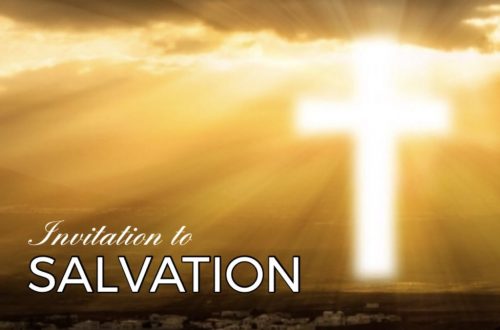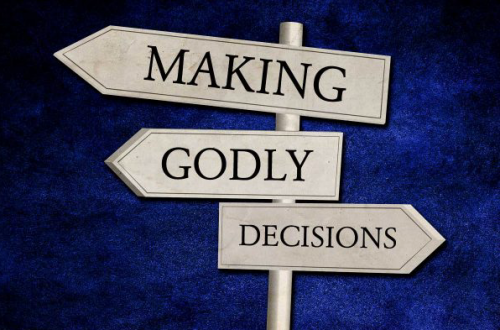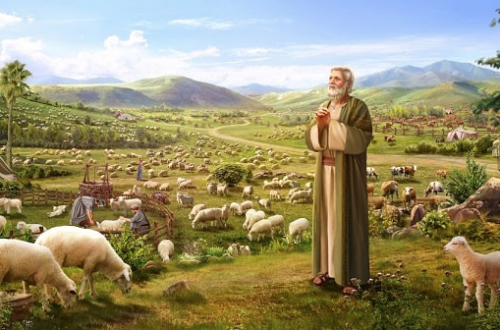Creative Science 38 – Common Genesis Objections
"Now who is there to harm you if you are zealous for what is good? But even if you should suffer for righteousness’ sake, you will be blessed. Have no fear of them, nor be troubled, but in your hearts honor Christ the Lord as holy, always being prepared to make a defense to anyone who asks you for a reason for the hope that is in you; yet do it with gentleness and respect, having a good conscience, so that, when you are slandered, those who revile your good behavior in Christ may be put to shame." 1 Pe 3:13-16 (ESV)
The forces of logic and reason do not easily prevail against well entrenched beliefs (or disbeliefs). Previous chapters have demonstrated that we are more than our biology, that the earth is relatively young, that Evolution and entropy are at odds, and a myriad of other facts supporting the assertions of scripture. After objectively examining both the Creation and Evolution models in detail it seems difficult to dismiss scripture as merely the rambling of superstitious farmers from the distant past. However, as also discussed in previous chapters, Evolution is not simply a theory to be analyzed and tested. It is a deeply held belief system. Beliefs are always thought – by the believer – to be rational whether they are or not. The determined Christian will hold to his faith no matter how irrational it may seem. Likewise, the determined Evolutionist will hold onto his faith no matter how irrational it may seem. There is one stark difference. The Christian is not limited to human logic or materialism. The Evolutionist stakes his or her claim of faith on both. It is usually when flaws in Evolution are pointed out that the Evolutionist starts raising objections to the Genesis account.
The first and most obvious objection to Genesis is the assertion that the earth is only a few thousand years old. This objection has been dealt with at considerable length in previous chapters, however for the sake of discussion it is worth review. The decay of earth’s magnetic field, the shape and distribution of continents, radiohalides, ocean chemistry, solar characteristics, and various other physical evidence has been presented to support the biblical claim of a relatively young earth and to contradict Evolution’s demand for great ages of time.
The next major objection is the biblical flood. This, too, has been the subject of several earlier chapters. Major physical evidence of the flood appears in the geologic record and includes the fossil record. Evolution forbids a recent global flood catastrophe, however the physical evidence indicates hydraulic catastrophe has visited most if not all of the planet surface. With evidence of relative earth age and water catastrophe shown to support the biblical account, less significant objections are now to be dealt with.
One of the objections raised by Evolutionists is the idea of Noah’s ark having the capacity required for the number of animals it must have held. The dimensions of the ark rival the capacity of some of the largest ocean liners ever built. The capacity of the ark was equal to hundreds of railroad boxcars. The median size of all air breathing creatures possibly alive at the time would be roughly equal to a sheep. One boxcar can easily hold more than fifty sheep. It was divided into decks with stalls and food storage areas. The logistics feeding and caring for that many animals staggers the imagination. The account in Genesis, although brief, provides us with enough information to understand that God intervened supernaturally in various ways to make the ark work as a habitat for the people and the animals alike. The size and shape of the ark were more than adequate without additional supernatural assistance.
Genesis claims that the first several generations of humans enjoyed life spans up to 10 times longer than those reached by modern man. These ages are often dismissed as fairy tails. Entropy is one reason to predict shorter lives over time, but the main factor is probably climate change. The biblical account provides only limited information, but it does suggest a very different water cycle from what we see today. It is likely that much less radiation reached ground level. A number of other climate-related factors may have also contributed to the greater longevity.
The bible says that God created Adam and Eve as the first generation of humans. It makes no provision for the existence of any other people. This means that the second generation could only have produced a third generation if siblings married. Opponents of scripture are quick to point to the prohibitions of sibling marriage in the laws of Moses, such as Lev 18:11. If God forbids incest between brother and sister, then where did Seth and Cain get their wives? This would not have been a problem for Seth or Cain for several reasons. First, the gene pool was both small and untainted by mutations in previous generations. Their children would not have been plagued by the same genetic problems often encountered with the children of incest today. For another, the command to "go forth and multiply" was of prime importance. For another, there were no other choices. Only eight people survived the flood on the ark. Three couples (the three sons of Noah and their wives) are credited in scripture with repopulating the earth. Their children would have had to marry either siblings or first cousins. In very ancient cultures we know that brothers would marry sisters to maintain "purity" of the bloodlines of their kings. When the taboo against incest was put against the taboo of impurity or failure to reproduce, the demand to bare children took priority over concern about how genetically close the couple was. Finally, the first biblical objections to sibling sexual relations are seen in Abraham’s time and the first formal law against sibling incest was not codified until after the Exodus. It is entirely reasonable to conclude that laws against sibling incest were put into place much later and for practical reasons which were not problematic for the earliest humans.
Biblical genealogies are used to calculate the approximate age of the earth. The strongest complaints against scripture are often the supposed contradictions. Within theological circles, even among the strongest believers in the literal account, there are disagreements about how to properly calculate the earth’s age. There are a few areas of contention used to try and invalidate scripture. One involves minor discrepancies between the New Testament genealogies (Mt 1:1-17 and Lk 3:27-38). A second involves how ages of patriarchs are translated. A third relates to the dating of key events and the periods between them.
It is true that the genealogies in Matthew and Luke are not identical. In fact they are very different. The fact they run in a different order is insignificant, as is the fact Matthew begins with Abraham whereas Luke goes all the way to Adam. The major difference takes place in the route from David to Jesus. Matthew’s list concentrates on the royal lineage route. Luke’s list provides additional details and appears to concentrate more on the genetic lineage. Perhaps the greatest difficulty is the giving of different names for Joseph’s father. There are various answers possible. First, Joseph may have been adopted or his mother may have remarried. In either case his physical father may be in one list and his adoptive father in the other. It could be that one lists a literal father while the other lists a recent ancestor such as a literal grandfather, particularly if the literal father died and the grandfather raised Joseph. Some propose that one list actually gives Mary’s lineage and the other Joseph’s, although the text does not easily lend itself to this sort of reading. Either way it is easily possible to have two distinct genealogical routes dividing after David then converging again at Jesus. Whatever the case, technical questions about the New Testament genealogies are actually minor at best.
Most New Testament quotations of the Old Testament appear to be taken from an earlier Greek translation known as the Septuagint. There are significant problems with the Septuagint itself. Several ages and names were incorrectly translated into Greek. Those early Jewish translators were seeking to make the Word of God available to the people in the common language and were more concerned with making it readable than with its accuracy. It is worth noting that the Septuagint was translated fairly rapidly by a team of seventy (hence the name) in a time when Greek culture was overwhelming Jewish society. With the discovery and publication of the Dead Sea Scrolls we now know that the Mesoratic Hebrew text is a far more reliable original resource for translation than the Septuagint. The early church did not have the luxury of a widely available original Hebrew language text. St. Jerome is credited with translating the Septuagint into Latin to produce the text known as the Vulgate. This third translation introduced many more errors. Unfortunately the Septuagint or worse yet, the Vulgate, have served as original source material for various later translations into common language bibles. When selecting an English bible it is always best to choose one translated from the original languages (Hebrew Old Testament and Greek New Testament). It is also only fair to note that a few passages, most notably part of Daniel, appear to have been written originally in a third language, Aramaic. The point of all this is to explain that discrepancies in certain genealogical information, including numerical values (ages or lengths of time), are due to translation difficulties and particularly the fact that the Apostles relied on the Septuagint as their source of Old Testament scripture. The problem isn’t that a name or two got omitted or spelled differently, it is a wonder that the lists survived as well as they did over thousands of years to reach us with so few variations.
The bible provides us with very specific dates making it relatively easy to calculate the years from Creation to the present. The flood took place about 1656 years after Creation. Abraham was born about 1948 years after Creation. Jacob’s family entered Egypt about 2217 years after Creation. There is some question as to whether Israel remained in Egypt for 400 years or whether it was actually 400 years from the prophecy given to Abraham until the Exodus. Although is more widely believed that Israel was in Egypt the entire 400 years, there is strong biblical support for dating the alternative. The difference is nearly two centuries. Either way, we know David ruled from about 1010 BC to about 970 BC. The bible provides us with enough detail to calculate that the Exodus took place about 1446 BC. Working backward from this point, the Exodus took place either about 2617 or 2448 years after Creation. This places Creation as late as about 3794 BC to as early as 4063 BC. As of 2009 the earth is roughly 5800 to 6100 years old.
The modern Jewish calendar, the official calendar of Israel, reckons the year to be 5770 (as of Rosh Hashanah 2009). This figure is very close the lower age calculated above and could even be more accurate. It is not known for sure when Jews began to count years by this method since the bible itself does not count time this way. It is known, however, that the Jews are not the only ones who counted time since Creation. Some western European genealogies of kings recorded centuries before Christianity include years numbered from Creation, even naming biblical figures like Japheth, Noah, and in some cases some earlier patriarchs as far back as Adam. The exact age of the earth is not nearly as important as the fact that our planet is quite young. Either scripture is a recording of God’s gift of revelation and relationship to and with mankind or it is little more than a collection of stories handed down through one obscure ancient tribe.
The following is a chart of dates from Creation to Israel’s entry to Egypt. The dating of the Exodus relative to Israel entering Egypt (at the end of this chart) is debated, but is at most 430 years and at least 194 years. The date of the Exodus is reasonably well established in the mid-fifteenth century BC.
Certainly this chapter fails to capture the whole of the objections to the biblical claim to the age of the earth, let alone scripture generally. There are many fine books in print offering well reasoned explanations for the many objections to scripture and it is to these I would direct you for more information on the subject.



One Comment
telson
Nowadays, people in the
Nowadays, people in the world are speaking pole shift, solar storms, changes of the earth's magnetic field, increasing of earthquakes and volcanic activities. The mankind has been awoken to observe and understand that something is happening on the earth, the sun and the space. The Bible (the Word of God) tells the things and phenomenons of the end time that shake the world, which are large and disastrous earthquakes, solar storms and earth's pole shift.
You can read the whole article in here:
http://koti.phnet.fi/petripaavola/occurrencesoftheendtime.html